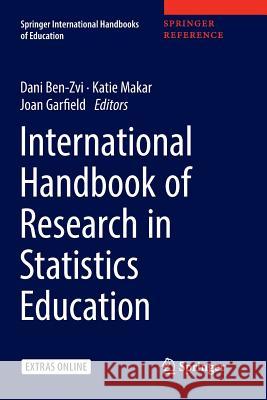International Handbook of Research in Statistics Education » książka
topmenu
International Handbook of Research in Statistics Education
ISBN-13: 9783319881928 / Angielski / Miękka / 2019 / 512 str.
Kategorie:
Kategorie BISAC:
Wydawca:
Springer
Seria wydawnicza:
Język:
Angielski
ISBN-13:
9783319881928
Rok wydania:
2019
Wydanie:
Softcover Repri
Ilość stron:
512
Waga:
0.73 kg
Wymiary:
23.39 x 15.6 x 2.74
Oprawa:
Miękka
Wolumenów:
01
Dodatkowe informacje:
Wydanie ilustrowane











